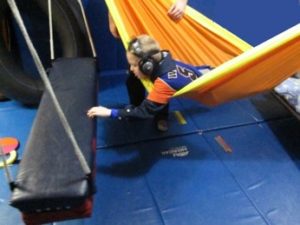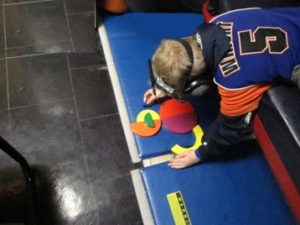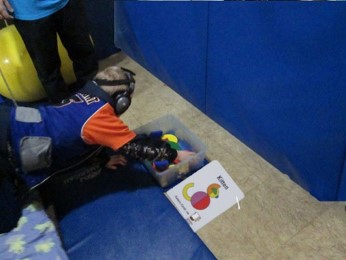The main idea of this Motor Maze for a child with motor planning deficits is to entice the child to integrate using visual perceptual skills with language to guide motor output. An age appropriate task card has been selected and therapeutic listening is being used to assist with attention.
The first step for this youngster will be to speak up to say:
- The names of the two shapes to be ferried across the swings
- What parts of the cat the shapes represent
- Where exactly the two shapes are supposed to go
The next step is for the youngster to plan and sequence the motor moves needed to navigate the maze. He will start from the platform swing, move through the hammock, and end up on the glider. This step emphasizes using vision and vestibular input to guide his motor plan.
Finally, he will have to sustain attention, retrieve language cues, and use short term memory to arrange the parts of the cat so that they match the arrangement shown on the task card. This completes the loop by reminding him to check the task card with his finished product.




Comments are closed.